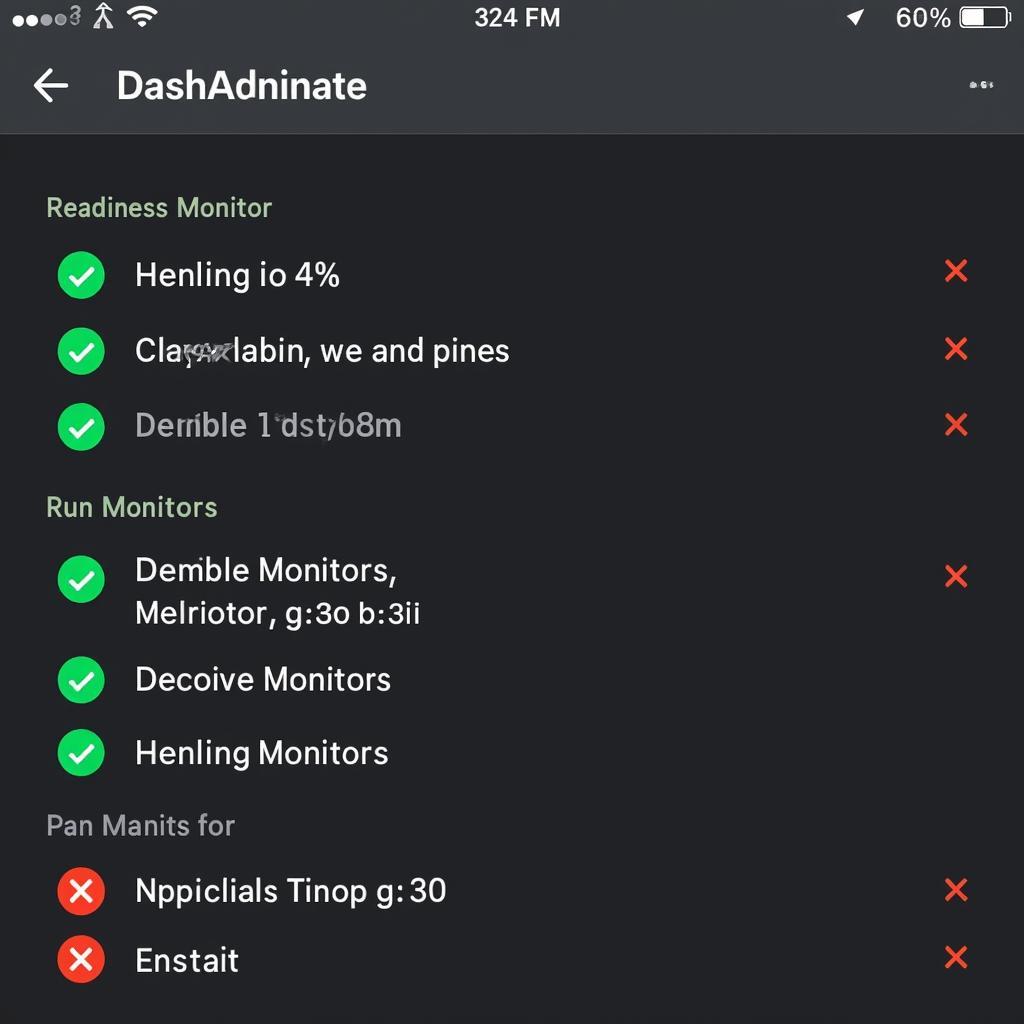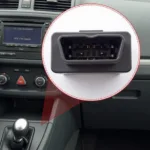Understanding your car’s emissions system and its readiness status is crucial, especially when facing an upcoming emissions test. This is where DashCommand OBD2 readiness monitors come in handy. This comprehensive guide will delve into OBD2 readiness monitors, focusing on their significance with the DashCommand app, a powerful tool for car diagnostics.
What are OBD2 Readiness Monitors?
OBD2 readiness monitors are built-in self-diagnostic tests within your car’s onboard computer. These tests continuously monitor the performance of your vehicle’s emission control systems. Each monitor focuses on a specific component or system, ensuring it operates within acceptable parameters to minimize pollutant emissions.
DashCommand and OBD2 Readiness Monitors
While all OBD2 scanners can read readiness monitors, DashCommand takes it a step further. This app provides a user-friendly interface and detailed information about each monitor’s status, making it easy for even novice users to understand.
Here’s what DashCommand offers:
- Clear Status Display: Easily identify which monitors have run and passed (indicated by “Complete” or a green checkmark), are currently running (“Not Complete” or a yellow indicator), or have failed (“Failed” or a red “X”).
- Detailed Information: Access comprehensive explanations of each readiness monitor, helping you understand its function and importance.
- Troubleshooting Tips: Receive potential causes for incomplete or failed monitors, aiding in quicker diagnosis and repair.
Why are OBD2 Readiness Monitors Important?
- Emissions Testing: Most states require passing an emissions test to renew your vehicle registration. If any readiness monitor shows “Not Complete” or “Failed”, your vehicle will likely fail the test.
- Early Problem Detection: Monitors can detect issues in their early stages, potentially saving you costly repairs down the line.
- Improved Fuel Efficiency: A properly functioning emissions system can contribute to better fuel economy.
Common Reasons for Incomplete OBD2 Readiness Monitors
- Recently Cleared Codes: If your car’s computer codes were recently cleared (e.g., after a repair), the monitors need time to run their cycles again.
- Battery Disconnection: Disconnecting your car’s battery resets the OBD2 system, requiring the monitors to complete their cycles again.
- Driving Habits: Specific driving conditions are needed for certain monitors to run, such as a mix of city and highway driving.
How to Use DashCommand to Check and Reset OBD2 Readiness Monitors
- Download and Install: Download the DashCommand app from the App Store or Google Play Store and install it on your smartphone or tablet.
- Connect the OBD2 Adapter: Purchase a compatible Bluetooth or Wi-Fi OBD2 adapter and plug it into your vehicle’s OBD2 port, usually located under the dashboard on the driver’s side.
- Pair Your Device: Open the DashCommand app and pair it with your OBD2 adapter following the on-screen instructions.
- Access Readiness Monitors: Navigate to the “OBD2” or “Diagnostics” section within the DashCommand app and select “Readiness Monitors.”
- Interpret the Results: Review the status of each readiness monitor, noting any that are “Not Complete” or “Failed.”
- Reset Monitors (If Needed): While not recommended unless instructed by a mechanic, some apps, including DashCommand, might offer a feature to reset readiness monitors.
DashCommand: Your OBD2 Readiness Companion
DashCommand provides a user-friendly and informative way to interact with your car’s OBD2 system, including its readiness monitors.
For more information on maximizing your OBD2 experience, explore our curated selection of the best obd2 monitor ios options available. Additionally, if you’re seeking free solutions, check out our recommendations for the best free obd2 app iphone.
By understanding and monitoring your vehicle’s readiness status, you can ensure its optimal performance, pass emissions tests with confidence, and potentially save on costly repairs.



